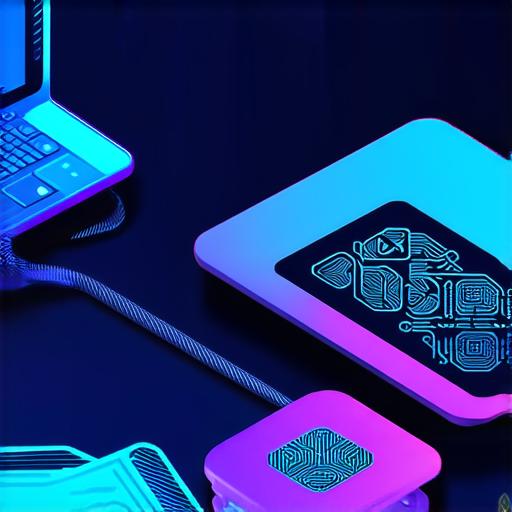
Latest Updates in Blockchain Development
Decentralization: The Key to Blockchain’s Success
One of the most significant aspects of blockchain technology is its decentralized nature. Unlike traditional systems that rely on a central authority to control and manage data, blockchain networks are operated by a distributed network of nodes or computers that work together to maintain the integrity and security of the network.
This decentralization provides several benefits, including greater transparency, security, and traceability. By eliminating the need for intermediaries, such as banks or other financial institutions, blockchain technology enables direct transactions between parties, reducing costs and increasing efficiency. Additionally, because all transactions are recorded on an immutable ledger that is publicly accessible, there is greater transparency and accountability in the system.
Smart Contracts: Automating Complex Business Processes
Another key development in blockchain technology is smart contracts. Smart contracts are self-executing agreements with the terms of the agreement written into code. They enable automation of complex business processes, such as supply chain management or voting systems, by eliminating the need for intermediaries and reducing the risk of errors or fraud.
Smart contracts can be programmed to execute automatically when certain conditions are met, such as delivery of goods or payment of funds. This enables organizations to streamline their operations and reduce costs, while also increasing the speed and accuracy of transactions. Smart contracts can also be used to create new revenue streams, such as through the sale of digital assets or tokens.
Consensus Mechanisms: Ensuring Network Security
Consensus mechanisms are algorithms used to reach agreement on the state of the blockchain. They are essential for ensuring network security and maintaining the integrity of the ledger.
Proof of work is a consensus mechanism that requires miners to solve complex mathematical problems in order to validate transactions and add them to the blockchain. This process requires significant computing power and energy consumption, making it less environmentally friendly than other consensus mechanisms.
Proof of stake, on the other hand, relies on the validators’ stake in the network, such as the amount of cryptocurrency they hold, to validate transactions and add them to the blockchain. This reduces the need for significant computing power, making it more energy-efficient and cost-effective.
Delegated proof of stake is a consensus mechanism that allows organizations to delegate the validation process to a smaller group of validators, who are chosen based on their reputation or expertise in the network. This enables faster and more efficient transaction processing, while also reducing the risk of centralization and control by a small group of entities.
Real-Life Examples of Blockchain Technology in Action
There are many real-life examples of how blockchain technology is being used across different industries. Some notable examples include:
- Cryptocurrency: Perhaps the most well-known use case for blockchain technology, cryptocurrencies like Bitcoin and Ethereum are decentralized digital currencies that can be used for transactions without intermediaries. They have revolutionized the way we think about money and have the potential to disrupt traditional financial systems.
- Supply chain management: Blockchain technology is being used in supply chain management to increase transparency, traceability, and efficiency. By using smart contracts and decentralized ledgers, organizations can streamline their operations and reduce costs, while also increasing the speed and accuracy of transactions.
- Voting systems: Blockchain technology is being explored as a potential solution for secure and transparent voting systems. By using decentralized ledgers and smart contracts, it may be possible to eliminate fraud and increase transparency in the voting process.
- Healthcare: Blockchain technology is being used in healthcare to improve data security, privacy, and interoperability. By using decentralized ledgers and smart contracts, organizations can securely store and share patient data, while also reducing the risk of errors and improving the accuracy of medical records.

Expert Opinions on the Future of Blockchain Technology
Many experts predict that blockchain technology will continue to evolve and become more widely adopted in various industries. Some of the key trends and developments expected in the future include:
- Greater standardization: As the blockchain ecosystem continues to mature, we can expect to see greater standardization across different platforms and protocols. This will enable more interoperability between different systems and workflows, making it easier for organizations to integrate blockchain into their existing processes.
- Improved scalability: The scalability of blockchain networks is a key challenge that needs to be addressed in order to see widespread adoption in industries like finance and supply chain management. We can expect to see further advancements in consensus mechanisms, smart contract design, and network architecture that will enable more efficient and faster transactions on blockchain networks.
- Increased regulation: As blockchain technology continues to gain popularity, we can expect to see increased regulation and oversight from governments and regulatory bodies. This may include the development of new regulations and standards for the use of blockchain in various industries, as well as increased scrutiny of blockchain-based businesses and projects.
- Greater adoption: Despite some concerns about the risks and challenges associated with blockchain technology, many experts predict that it will continue to gain widespread adoption in various industries. This may include the use of blockchain for financial transactions, supply chain management, healthcare, and more.



